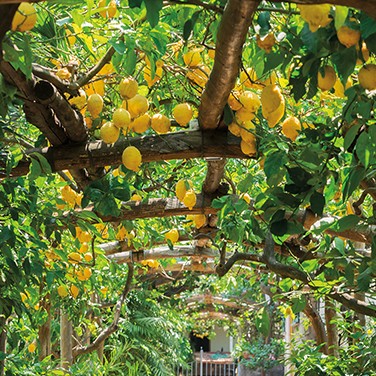New Sensors Signal When Plants Need Water
By Kylie Wolfe
Plants are more complicated than they seem. Instead of competing for resources, some actually lend a hand, or limb, to help each other succeed. They communicate on the surface and beneath, releasing volatile organic compounds into the air and secreting soluble chemicals into the soil. And they share water and nutrients, sending distress signals when there are signs of drought and disease.
Scientists believe there is a lot to learn from the sophisticated communication strategies of plants. So they decided to eavesdrop on their conversations.
Nature’s Communication Network
Researchers at the Technical University of Crete, led by Aggelos Bletsas, professor of electrical and computer engineering, are testing a new way to tune in to plant communication.
Already, plants are able to relay chemical and physical needs through fungal systems called mycorrhizal networks. But we don’t have a way to understand what they’re saying. Maybe the plants are lacking an essential resource or facing environmental stress. Perhaps the air quality is poor, or they aren’t getting enough sunlight. If we could learn to interpret plant conversations, we could figure out ways to help them thrive.
With the evolution of sensors in size and function, scientists now have an opportunity to learn about factors impacting the productivity, health, and quality of plants.
"We can literally 'listen' to the moisture of the plant."
When Life Gives You Lemons
Using a variety of basic components, the team created mini plant broadcast centers. They attached an antenna to a lemon growing on a tree, added a humidity sensor, and were able to learn about plant moisture via a transistor and an FM radio station.
When the soil was wet or the atmosphere humid, the transistor turned on and off at a slower rate. When it was dry, the transistor did so at a faster rate. With this setup, they were able to monitor the tree from a smartphone.
“We can literally ‘listen’ to the moisture of the plant,” said Bletsas. The team recently applied for a United States patent for their technology.
“No other team had created a wireless network among plants, transmitting information while consuming only a few microwatts and costing just a few dollars,” he added.
Bletsas’ technique is less complex and also more cost effective than Bluetooth, for example. A Bluetooth-based sensor costs about $25 and his team’s version costs a fraction of that: $3.40.
Benefits of Botanical Broadcasts
Designing a wireless network for plants is the first step toward a future of tech-savvy farming. New technology like this would provide valuable information about plant needs, giving workers the ability to address them with more accuracy.
Using these simple sensors to collect real-time data, farmers can learn about the status of their crops in terms of air and soil moisture. More effective monitoring may even reduce pesticide use, maximize fertilizer potential, and help workers manage resources efficiently.
Helping Plants and Farmers Succeed
By incorporating more sensors, especially on uneven ground, farmers would be able to achieve more optimal results, improving productivity and possibly helping to address global food shortages.
“Two of these sensors for every acre on any given farm might change the way we [conduct] agriculture and ‘understand’ plants,” said Bletsas.
That’s why the team has chosen to make them as affordable as possible. The group hopes to launch sensors costing less than $1 a piece, providing an accessible form of agricultural technology and environmental monitoring to the community.



